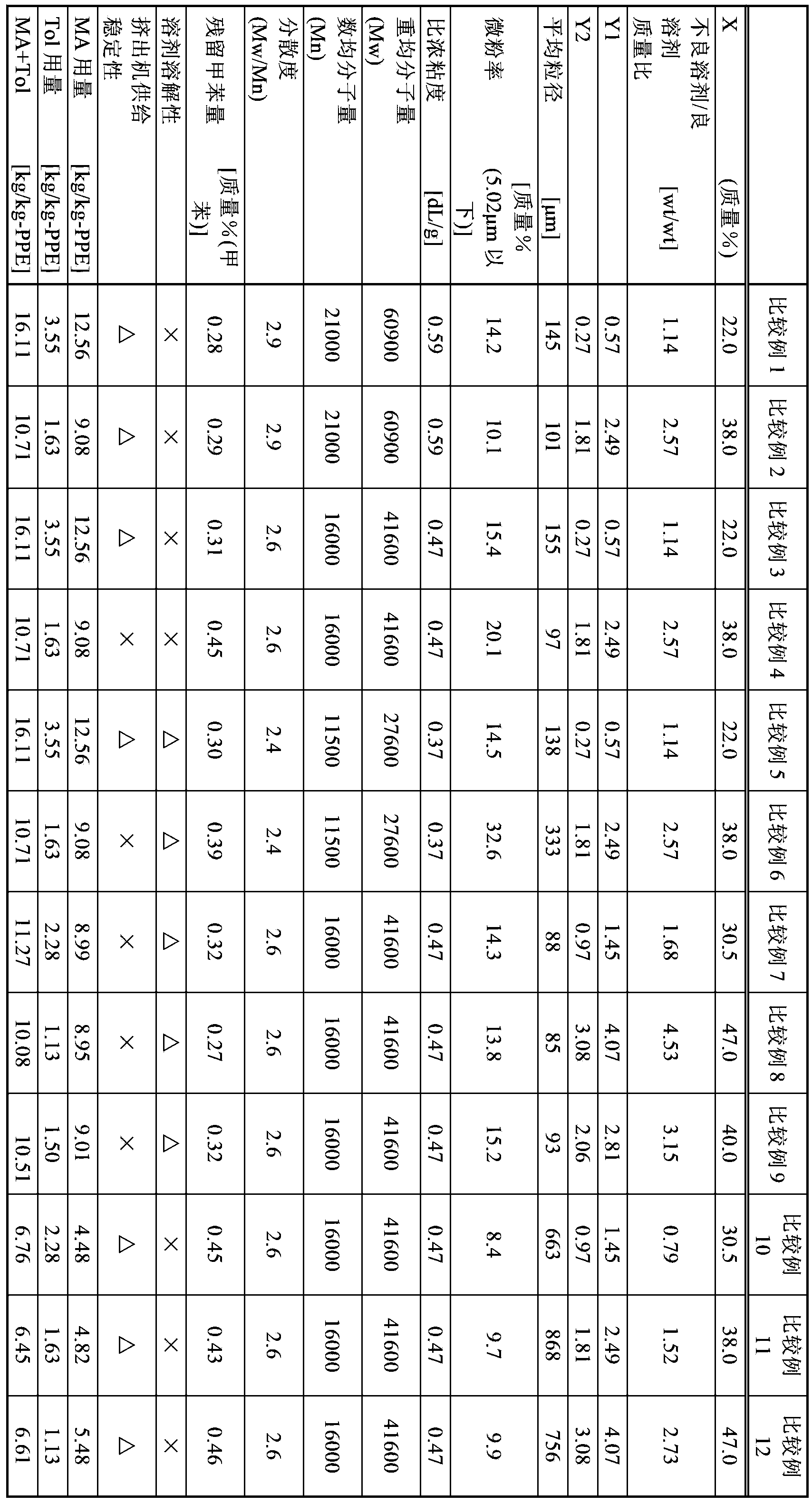Production method for polyphenylene ether powder
A manufacturing method and polyphenylene ether technology are applied in the manufacturing field of polyphenylene ether powder, which can solve the problems of insufficient stability, high residual solvent content, difficult liquid additives, etc., achieve excellent solvent solubility, reduce solvent consumption, The effect of less residual solvent
- Summary
- Abstract
- Description
- Claims
- Application Information
AI Technical Summary
Problems solved by technology
Method used
Image
Examples
Embodiment
[0261] Hereinafter, the present invention will be specifically described by giving specific examples and comparative examples for comparison therewith, but the present invention is not limited to the following examples.
[0262] First, measurement methods of physical properties and characteristics applied to Examples and Comparative Examples are shown below.
[0263] ((1) Measurement of average particle size and fine powder ratio)
[0264] The PPE powders obtained in Examples and Comparative Examples described later were sieved using a micro-electromagnetic vibrating sieve (M-2 type manufactured by Tsutsui Rika Instruments Co., Ltd.), and the mass of each classifier was measured.
[0265] From the cumulative curve of the particle size distribution, the diameter (median diameter) of the particles corresponding to the central cumulative value was defined as the average particle diameter.
[0266] Similarly, the content (mass %) of the obtained particles of 5.02 μm or less was c...
manufacture example 1
[0300] In a 40-liter jacketed polymerization tank (the bottom of the polymerization tank is equipped with a nozzle for introducing oxygen-containing gas, a turbine impeller and a baffle, and the exhaust line on the upper part of the polymerization tank is equipped with a reflux condenser), one side is filled with 0.5 L Nitrogen gas was blown in at a flow rate of 4.57 g, 24.18 g of 47 mass % hydrogen bromide aqueous solution, 11.00 g of di-tert-butylethylenediamine, 62.72 g of di-n-butylamine, 149.92 g of butyl Dimethylamine, 20.65 kg of toluene, and 3.12 kg of 2,6-dimethylphenol were stirred until a uniform solution was formed and the inner temperature of the polymerization tank was 25°C.
[0301] Next, dry air was introduced from the nozzle into the polymerization tank at a rate of 32.8 NL / min to start polymerization. Dry air was blown for 185 minutes to obtain a polymerization mixture. In addition, during polymerization, internal temperature was controlled to 40 degreeC. T...
manufacture example 2
[0305] The molecular weight was controlled by changing the polymerization time by setting the drying air supply time to 125 minutes. Other conditions were the same as in Production Example 1 to obtain a polymer solution. The obtained polymer solution was referred to as polymer solution (2).
PUM
| Property | Measurement | Unit |
|---|---|---|
| particle size | aaaaa | aaaaa |
| dispersity | aaaaa | aaaaa |
| dispersity | aaaaa | aaaaa |
Abstract
Description
Claims
Application Information
 Login to View More
Login to View More - Generate Ideas
- Intellectual Property
- Life Sciences
- Materials
- Tech Scout
- Unparalleled Data Quality
- Higher Quality Content
- 60% Fewer Hallucinations
Browse by: Latest US Patents, China's latest patents, Technical Efficacy Thesaurus, Application Domain, Technology Topic, Popular Technical Reports.
© 2025 PatSnap. All rights reserved.Legal|Privacy policy|Modern Slavery Act Transparency Statement|Sitemap|About US| Contact US: help@patsnap.com


